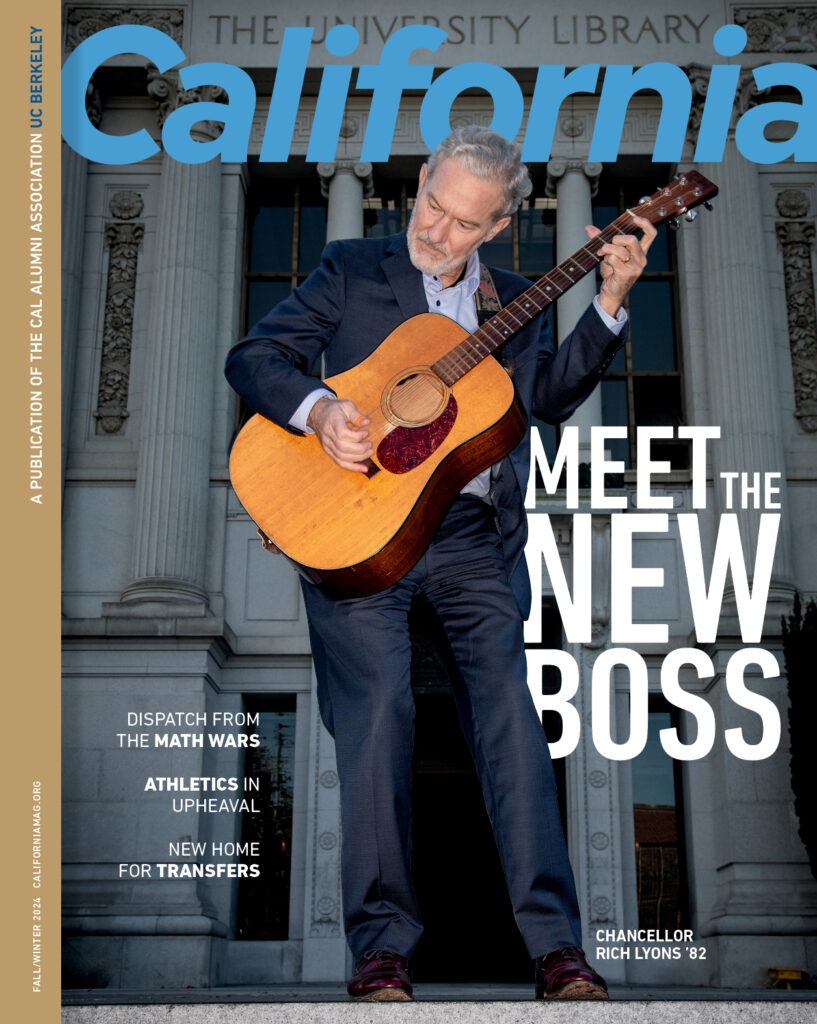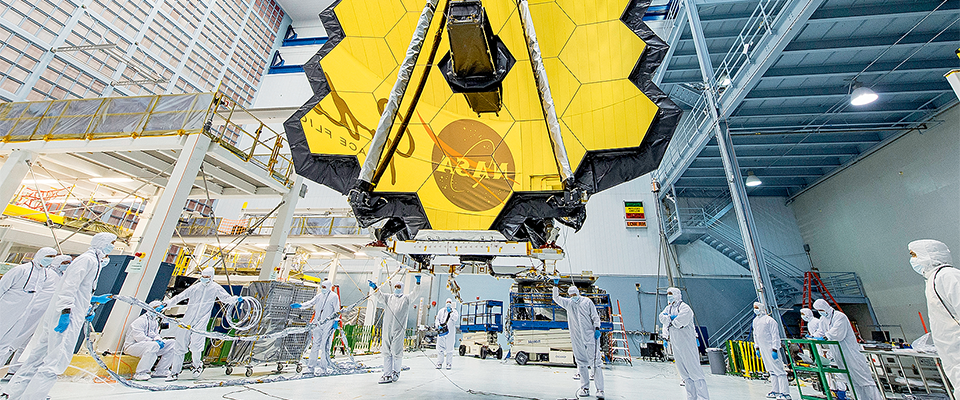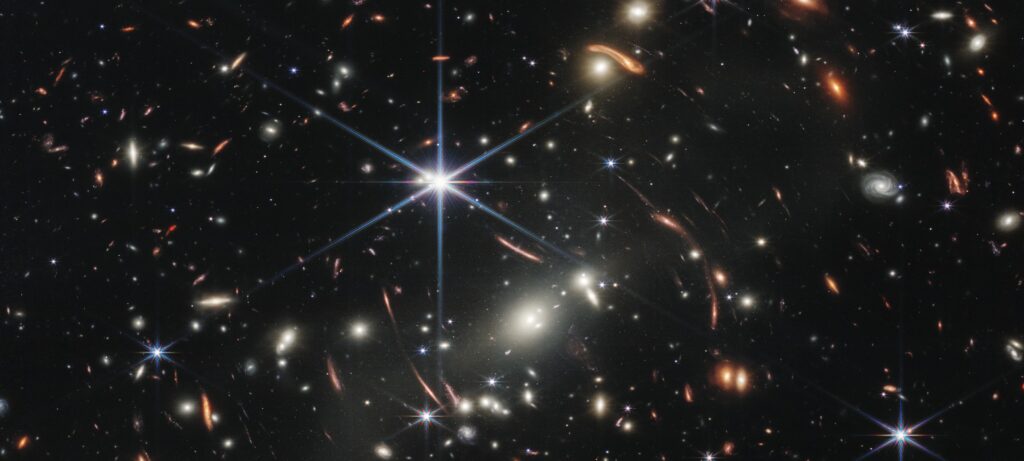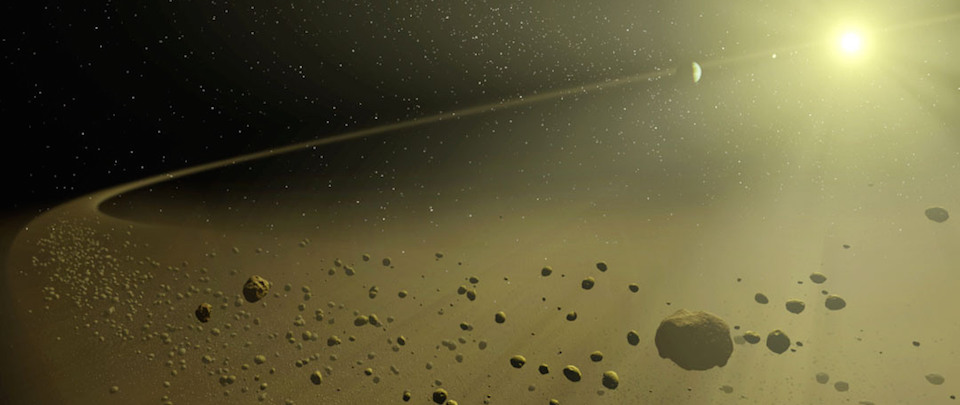The James Webb Space Telescope will offer an unprecedented view of the universe.
AFTER A QUARTER-CENTURY IN DEVELOPMENT and years of delays, the James Webb Space Telescope (JWST) is poised to finally launch in November. Its multiyear mission: to explore other Earth-like planets and seek out the universe’s first light.
Orbiting one million miles from Earth, JWST will capture remnants of infrared light from the earliest star and galaxy formations more than 13.5 billion years ago, a split second after the Big Bang (or about 100 million years from our location). Its suite of four instruments will decipher the light to determine stellar compositions and their surrounding environments. It will also examine the atmospheres of exoplanets orbiting nearby stars to determine their suitability for life.
“This opens our eyes to the infrared universe and tells us about our history from the Big Bang until now, and how it was capable of making all the objects we see, including a home for ourselves,” says John Mather, Ph.D. ’74, a Nobel laureate who serves as the JWST senior project scientist at NASA’s Goddard Space Flight Center in Greenbelt, MD.
The $9.6 billion successor to the Hubble Space Telescope is a four-story-tall, approximately 14,000-pound global effort by thousands of scientists and engineers from 14 countries and three space agencies. It is most notable for its 21-foot-diameter mirror of 18 gold hexagon reflectors polished within nanometers of accuracy, as well as five silver sunshields to block the Sun’s radiation and cool the telescope to minus 388˚F. All of that folds into a 16-foot-diameter Ariane rocket and unfurls en route to its permanent orbit.
The JWST advances the Big Bang radiation measurements that earned Mather and UC Berkeley astrophysics professor George Smoot III the 2006 Nobel Prize in physics. Smoot is involved with a team scheduled to use the telescope for gravitational lensing research. They’re joined by a slew of fellow Berkeley alumni and professors involved with this next-generation observatory.
JWST deputy telescope scientist Marshall Perrin, Ph.D. ’06, worked on methods to unfold, align, and test the mirrors at the Space Telescope Science Institute (STScI) in Baltimore, which helps guide the JWST’s science and mission operations. Perrin’s research group will also lead some of the first exoplanet imaging observations. Lead commissioning scientists Randy Kimble, Ph.D. ’83, at Goddard, and Scott Friedman, Ph.D. ’84, at STScI, worked on the instrument testing during development, and are now helping plan the steps to ready the telescope for viewing once in orbit.
After the craft’s deployment and testing by late spring (pending a November launch), the Berkeley astronomy department will take an active role in the mission’s Director’s Discretionary-Early Release Science program, enabling pre-selected science teams first use of the telescope to gather preliminary data to assist future observers. Professor Imke de Pater and Associate Professor Dan Weisz ’04 will helm two of the 13 teams chosen to test drive and calibrate the telescope, establish baseline measurements for future researchers, and conduct their own research, which they hope to begin analyzing next fall. The only pair of team leaders from a single university, de Pater will observe Jupiter and its moons, and Weisz, nearby galaxies. Weisz’s team is also writing the software that will enable other scientists—and the public—to evaluate JWST images.
“My program is designed to enable community science,” he says. “There is discovery space for us, but our focus is on enabling discovery space for everyone.”
From the Fall 2021 issue of California.





















